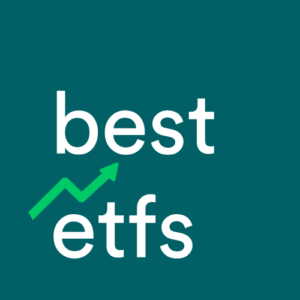In this article let’s walk through two common valuations tools which an ASX bank share analyst would use to provide his or her ‘target’ on a company like National Australia Bank Ltd (ASX:NAB).
As you can imagine, this is the ‘easy version’. But ‘easy’ doesn’t equal ‘good’. So, at the bottom, we’ll provide some further resources alongside potential indicative valuations. Basically, it goes without saying but these valuations are not guaranteed.
Bank shares like National Australia Bank Ltd, Westpac Banking Corp (ASX:WBC) and ANZ Banking Group (ASX:ANZ) are very popular in Australia because they tend to have a stable dividend history, and often pay franking credits.
While we explain the basics of investing in bank shares in this article, if you’re interested in understanding the value of dividend investing in Australia, consider watching the video from the education team at Rask Australia.
To access our valuation models, videos and tutorials, consider subscribing to the Rask Australia YouTube channel. You will receive the latest (and free) value investing videos from our analysts. Click here to subscribe.
Reversing the PE ratio for valuations
If you have been investing in direct shares for more than a few years you will have heard about the PE ratio. The price-earnings ratio or ‘PER’ compares a company’s share price (P) to its most recent full-year earnings per share (E). If you bought a coffee shop for $100,000 and it made $10,000 of profit last year, that’s a price-earnings ratio of 10x ($100,000 / $10,000). ‘Earnings’ is just another word for profit. So, the PE ratio is basically saying ‘price-to-yearly-profit multiple’.
The PE ratio is a very simple tool but it’s not perfect so it should only be used with other techniques (see below) to back it up. That said, one of the simple ratio strategies even professional analysts will use to value a share is to compare the company’s PE ratio with its competitors to try to determine if the share is overvalued or undervalued. It’s akin to saying: ‘if all of the other banking sector stocks are priced at a PE of X, this one should be too’. We’ll go one step further than that in this article. We’ll apply the principle of mean reversion and multiply the profits per share (E) by the sector average PE ratio (E x sector PE) to calculate what an average company would be worth.
Using NAB’s share price today, together with the earnings per share data from its 2020 financial year, we can calculate the company’s PE ratio to be 33.2x. That compares to the banking sector average PE of 25x.
Reversing the logic here, we can take the profits per share (EPS) ($0.805) and multiply it by the ‘mean average’ valuation for NAB. This results in a ‘sector-adjusted’ share valuation of $19.85.
Wall Street’s oldest valuation tool: the DDM
A DDM or dividend discount model is quite different from ratio valuations like PER because it makes you forecast cash flows into the future (it uses dividends as ‘cash flow’). Because the banking sector has proven to be relatively stable with regards to share dividends, the DDM approach can be used. However, we would not use this model for, say, technology shares.
Basically, we need only one input into a DDM model: dividends per share. Then, we make some assumptions about the yearly growth of the dividend (e.g. 2%) and the risk level of the dividend payment (e.g. 7%). We’ve used the most recent full year dividends (e.g. from last 12 months or LTM) then assumed the dividends remain consistent but grow slightly.
For simplicity, let’s assume last year’s dividend payments are consistent. Important warning: last year’s dividends are not always a good input to a DDM because dividends are not guaranteed since things can change quickly inside a business. So far in 2020, Australia’s Big Banks have been cutting or deferring their dividends.
To make this easy to understand, using our DDM we will assume the dividend payment grows at a consistent rate in perpetuity (i.e. forever) at a yearly rate between 2% and 3%.
Next, we have to pick a yearly ‘risk’ rate to discount the dividend payments back into today’s dollars. The higher the ‘risk’ rate, the lower the share price valuation.
We’ve used an average rate for dividend growth and a risk rate between 6% and 11%.
This simple DDM valuation of NAB shares is $11.44. However, using an ‘adjusted’ dividend payment of $1.12 per share, the valuation goes to $20.08. The valuation compares to National Australia Bank Ltd’s share price of $26.72.
Summary thoughts
Obviously, simple models like these are handy tools for analysing and valuing a bank share like National Australia Bank Ltd. They can even make you feel warm and fuzzy inside because you have ‘put a value on it’.
That said, it’s far from a perfect valuation. While no-one can ever guarantee a return, there are things you can (and probably should) do to improve the valuation before you consider it as a worthwhile yardstick.
For example, studying the growth of the loans on the balance sheet is a very important thing to do: if they’re growing too fast it means the bank could be taking too much risk; too slow and the bank might be too conservative. Then, study the remainder of the financial statements for risks.
Areas to focus on include the provisions for bad loans (income statement), their rules for assessing bad loans (accounting notes) and the sources of capital (wholesale debt markets or customer deposit). On the latter, take note of how much it costs the bank to get capital into its business to lend out to customers, keeping in mind that overseas debt markets are typically more risky than customer deposits due to exchange rates, regulation and the fickle nature of investment markets.



